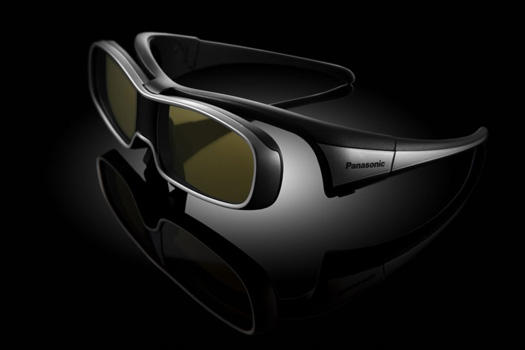A couple of years ago, after much delay, I finally got my own HDTV. Even got a PS3 to go with it too. It was glorious. Stupendous, even. Blu-Rays and HD channels practically jumped off the screen and smacked me in the face. Games looked lifelike. I, like, was Nathan Drake, man.
So, with the arrival of 3D-TV, we can expect similarly superlative results, right? A mind-blowing difference in the quality of our home-theatre experience?
Nope.
3D-TV is a half-baked technology yet to reach maturity and it is now being foisted on unsuspecting consumers. They will be sold the line that 3D is the next must-have in home entertainment. And one day that may very well be true. But it isn’t now.
Sony, Samsung, Panasonic and others are all pushing 3D-TV as the next wave in consumer electronics. The appeal, at least, according to these companies, is that 3D is a better and more immersive way to experience TV and film. By making you feel like you are ‘in’ a scene or sports game, 3D is supposed to make your entertainment experience that much more exciting.
But there are problems with the tech. Many of them. First is that the big players decided to go with a technology that relies on something called ‘active shutter glasses’. Unlike the relatively benign glasses you wore to watch Avatar, active shutter glasses are not only bulkier, but rely on a battery to work.
Can you imagine sitting down with the family on a Sunday afternoon? “Alright, let’s sit down and watch the game! Did everybody remember to charge their glasses?” Not exactly convenient.
More damningly, the 3D effect is by most accounts less than impressive. While there are better solutions – such as those that use AMOLED screens -they are far off, and only in the prototype stage. Most reports from this years CES and subsequent tests suggest the most common form – that on LCD TV’s like Sony’s and Samsung’s – it is occasionally neat, but nothing to write home about. Plasma is marginally better, but not much. Just as significantly, few can imagine that it’s compelling enough to use very often. When the new TVs start at around $2000, that lukewarm response does little to make anyone whip out their wallet or purse.
Even worse? 3D carries a warning that you shouldn’t watch it while drinking, if you need sleep, or if you ‘re near a balcony – because you might fall off. Inspiring, right? Not only is the effect not great, it might make you feel really awful too. Super.
So essentially, the next revolution in home theater is for now little more than an underdeveloped gimmick.
But even if films aren’t yet ready, video games should be great, right? I mean, they more so than film are all about ‘putting you in the action’. But again, the message here is: not yet. Much of the reason for this is that the hardware isn’t really up to it. Even if the PS3 is supposedly like a mini-supercomputer, because 3D works by generating a slightly different image for the left and right eyes, video game consoles have to basically generate twice the number of frames with the same processing power. The smooth 60 frames-a-second that was part of the draw of Wipeout HD drops to half that when displayed in 3D. Gran Turismo 5 may support 3D, but a test demo revealed that it doesn’t really add much to the experience.
So if 3D has so many problems, what’s motivating this sudden push? Two things, really. First, as Sony’s recent financial troubles have shown, competition on HDTVs was so fierce that they quickly became a commodity and margins evaporated. What once raked in a ton of cash for companies like Sony and Samsung was now brinigng in less, and companies needed a new, premium product in order to create another revenue stream.
Secondly, the wild, unprecedented success of Avatar has made things in three dimensions the hot new thing, and the consumer electronics industry seeing everything 3D as a get-rich-quick scheme.
But like the Blu-Ray/HD-DVD battle before it, companies are bringing out a technology that may or may not have mass appeal to a market that may or may not be ready for it. And unlike, say, a half-cooked MP3 player or cellphone, 3DTVs and Blu-Ray players aren’t cheap, and eager early-adopter consumers could soon find themselves with a very expensive gimmick that produces less-than-ideal results for a less-than-ideal price.
All of this ignores the fundamental question of whether 3D is actually better for anything. As Avatar made clear, all the fancy effects in the world won’t make up for a hackneyed plot with questionable assumptions. Whether or not 3D actually makes anything better beyond it being more flashy remains to be seen, and the jury is still out whether 3D is actually an improvement worth all the effort or not. On top of this, there is again the question of content. Some 3D Blu-Rays will be available soon, but the film that’s pushing all this won’t be available in 3D until next year. Right now, owning a 3D TV might be like owning an HDTV in 2003- it’s neat, but you’ll be hard-pressed to find content.
So in order to drive up their own revenues and cash in on a 3D crazy in Hollywood – that may not even do anything to make films better (Tim Burton, I’m looking at you) – Sony, Samsung and others are rushing 3D to market in whatever form they can, assuming they’ll figure out the details later.
Consumers in line to get a 3DTV will be just like me before I got an HDTV: excited for the new experiences it will bring. But unlike HD and Blu-Ray, which was a mature technology by the time I got around to it, 3D TV is a still undergoing change and refinement, and consumers who buy now will only be guinea pigs for companies who are skirting dangerously close to a disingenuous cash grab.
In 2 or 3 years, 3D in the home may be something worth drooling over. But for now, it’s half-baked and not ready for mass use. Don’t fall for it.






i agree completely